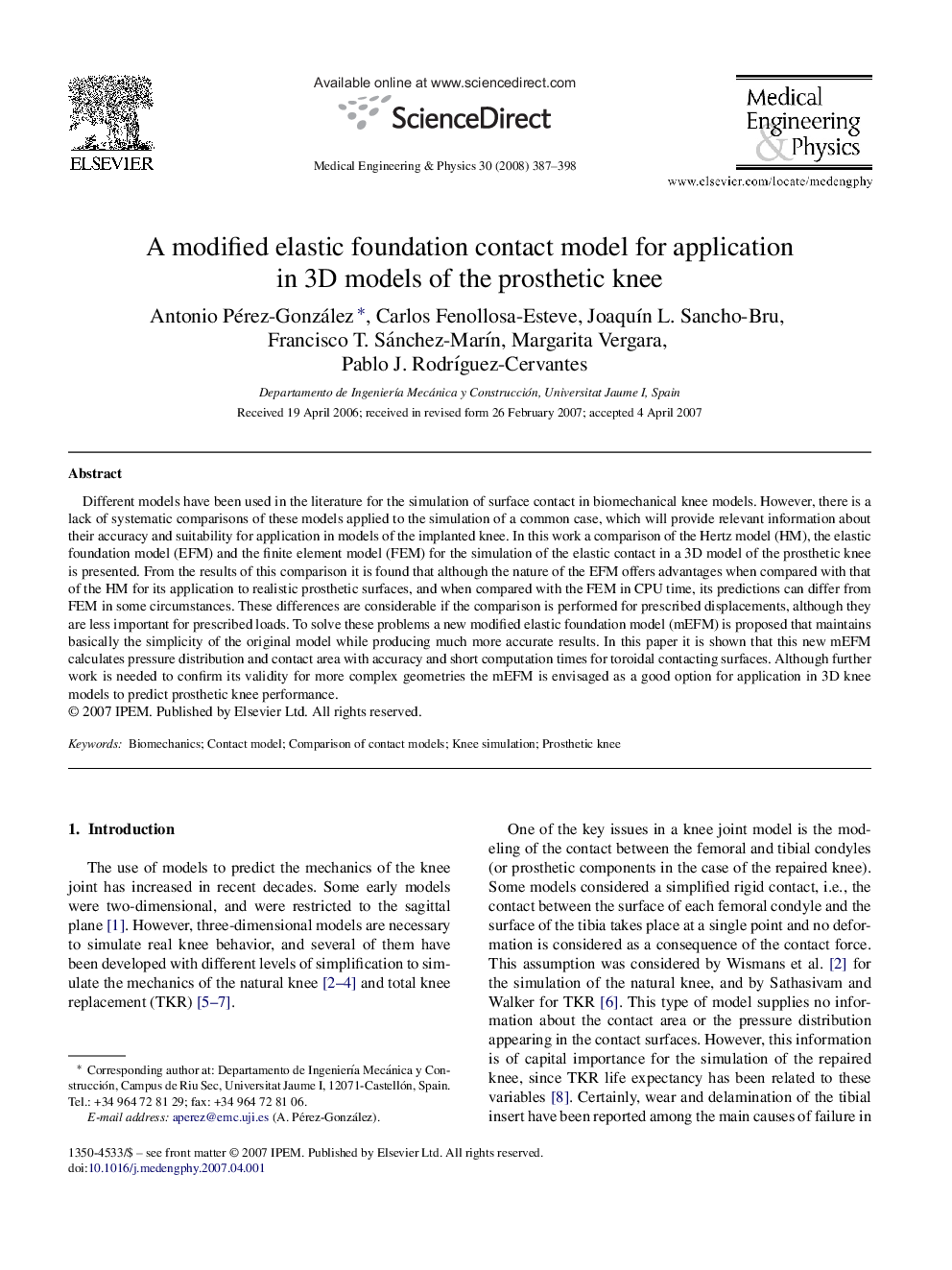| Article ID | Journal | Published Year | Pages | File Type |
|---|---|---|---|---|
| 877022 | Medical Engineering & Physics | 2008 | 12 Pages |
Different models have been used in the literature for the simulation of surface contact in biomechanical knee models. However, there is a lack of systematic comparisons of these models applied to the simulation of a common case, which will provide relevant information about their accuracy and suitability for application in models of the implanted knee. In this work a comparison of the Hertz model (HM), the elastic foundation model (EFM) and the finite element model (FEM) for the simulation of the elastic contact in a 3D model of the prosthetic knee is presented. From the results of this comparison it is found that although the nature of the EFM offers advantages when compared with that of the HM for its application to realistic prosthetic surfaces, and when compared with the FEM in CPU time, its predictions can differ from FEM in some circumstances. These differences are considerable if the comparison is performed for prescribed displacements, although they are less important for prescribed loads. To solve these problems a new modified elastic foundation model (mEFM) is proposed that maintains basically the simplicity of the original model while producing much more accurate results. In this paper it is shown that this new mEFM calculates pressure distribution and contact area with accuracy and short computation times for toroidal contacting surfaces. Although further work is needed to confirm its validity for more complex geometries the mEFM is envisaged as a good option for application in 3D knee models to predict prosthetic knee performance.
